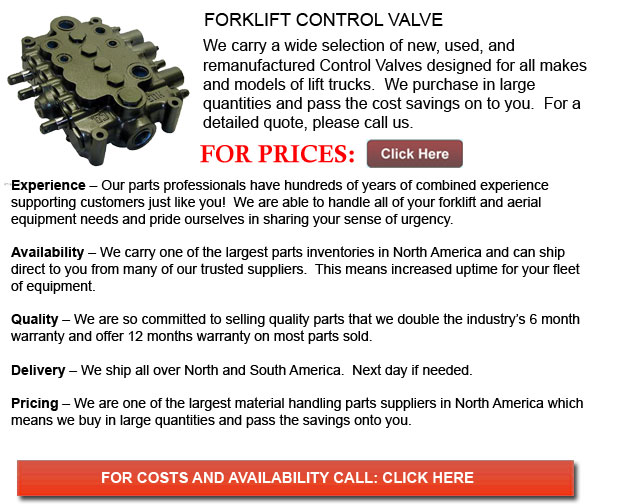
Forklift Control Valves - The earliest automated control systems were being used over two thousand years ago. In Alexandria Egypt, the ancient Ktesibios water clock constructed in the 3rd century is believed to be the first feedback control equipment on record. This clock kept time by regulating the water level within a vessel and the water flow from the vessel. A common style, this successful machine was being made in a similar manner in Baghdad when the Mongols captured the city in 1258 A.D.
Different automatic devices all through history, have been utilized in order to carry out certain tasks. A popular style used through the seventeenth and eighteenth centuries in Europe, was the automata. This piece of equipment was an example of "open-loop" control, consisting dancing figures which will repeat the same job again and again.
Closed loop or likewise called feedback controlled tools comprise the temperature regulator common on furnaces. This was developed during 1620 and accredited to Drebbel. One more example is the centrifugal fly ball governor developed during the year 1788 by James Watt and utilized for regulating steam engine speed.
J.C. Maxwell, who discovered the Maxwell electromagnetic field equations, wrote a paper in 1868 "On Governors," which could explain the instabilities exhibited by the fly ball governor. He utilized differential equations so as to describe the control system. This paper demonstrated the importance and helpfulness of mathematical models and methods in relation to comprehending complicated phenomena. It likewise signaled the beginning of mathematical control and systems theory. Previous elements of control theory had appeared earlier by not as dramatically and as convincingly as in Maxwell's analysis.
In the following one hundred years control theory made huge strides. New developments in mathematical techniques made it feasible to more accurately control significantly more dynamic systems as opposed to the original fly ball governor. These updated techniques include different developments in optimal control in the 1950s and 1960s, followed by advancement in stochastic, robust, optimal and adaptive control techniques during the 1970s and the 1980s.
New technology and applications of control methodology has helped produce cleaner engines, with cleaner and more efficient methods helped make communication satellites and even traveling in space possible.
At first, control engineering was performed as a part of mechanical engineering. Additionally, control theory was first studied as part of electrical engineering since electrical circuits could often be simply explained with control theory techniques. Nowadays, control engineering has emerged as a unique practice.
The first controls had current outputs represented with a voltage control input. So as to implement electrical control systems, the correct technology was unavailable at that time, the designers were left with less efficient systems and the choice of slow responding mechanical systems. The governor is a very effective mechanical controller which is still often utilized by several hydro plants. In the long run, process control systems became available prior to modern power electronics. These process controls systems were often used in industrial applications and were devised by mechanical engineers using hydraulic and pneumatic control machines, a lot of which are still being utilized these days.
![]() Click to Download the pdf
Click to Download the pdf
Forklift Parts
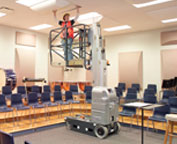
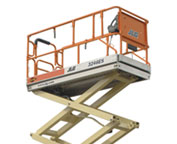
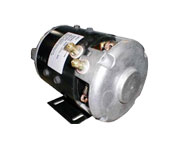
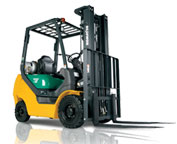
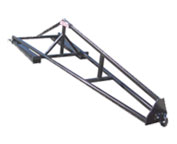
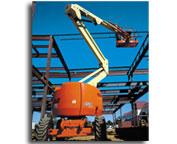
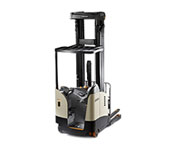
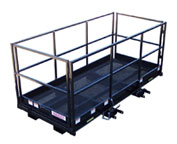
Lift Parts Express
TOLL FREE: 1-888-695-7994
LOCAL: 503-512-6230
2870 NE HOGAN RD E-445
Gresham, Oregon
forkliftpartsgresham.com
Email Us
About Us


